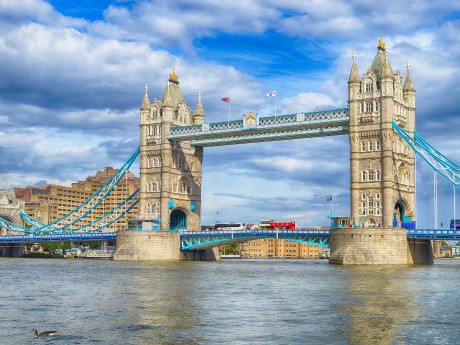England Highlights: London, Lake District, Stone Henge & Beatles' Liverpool
Visit England’s captivating destinations for a journey filled with history, culture and nature’s beauty. See the iconic landmarks in London such as Buckingham Palace and the London Eye. Marvel at the monument that is Stonehenge. Celebrate the musical heritage at Beatles Story in Liverpool, the birthplace of The Beatles. Embrace nature and have breathtaking views while in Lake District National Park.
Read more
Visit England’s captivating destinations for a journey filled with history, culture and nature’s beauty. See the iconic landmarks in London such as Buckingham Palace and the London Eye. Marvel at the monument that is Stonehenge. Celebrate the musical heritage at Beatles Story in Liverpool, the birthplace of The Beatles. Embrace nature and have breathtaking views while in Lake District National Park. From London’s charm to the musical magic of Liverpool, the ancient mysteries of Stonehenge and the natural beauty of Lake District National Park, this is a spellbinding tour that everyone should experience in their lifetime. Renting a car is recommended to go at your own pace and enjoy the views along the way. Waterviews strives to offer accommodation options within walking distance of water and/or in an area of touristic interest. Our prices include taxes (but excludes local tourist taxes). Customize your trip to your personal preferences with optional activities (hit the “Add Activities’’) or change hotels, etc. Contact us for customization at no extra cost at: Service@waterviewstravel.com
Destinations
- London
- Stonehenge
- Liverpool
- Lake District National Park
- London
Itinerary
London
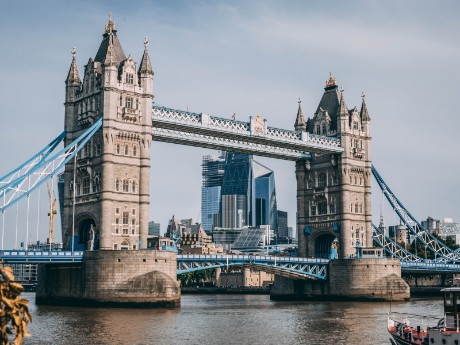
A truly global capital city, London is widely recognised for its worldwide influence on music, fashion and culture, as well as politics, trade and finance. As the largest city in Western Europe, London is cosmopolitan and vibrant and is characterised by its diverse and multicultural population. Those looking for history and culture can visit one of its many free museums or classic landmarks which line the cityscape, and for foodies the options are endless, ranging from international street food and markets to fine dining. London has it all.
Read more
A truly global capital city, London is widely recognised for its worldwide influence on music, fashion and culture, as well as politics, trade and finance. As the largest city in Western Europe, London is cosmopolitan and vibrant and is characterised by its diverse and multicultural population. Those looking for history and culture can visit one of its many free museums or classic landmarks which line the cityscape, and for foodies the options are endless, ranging from international street food and markets to fine dining. London has it all.
Additional Information
History
Settlements have existed on the site of London since well before Roman times, with evidence of Bronze Age and Celtic inhabitants. The Roman city of Londinium, established just after the Roman conquest of Britannia in the year 43, formed the basis for the modern city (some isolated Roman period remains are still to be seen within the City). After the end of Roman rule in 410 and a short-lived decline, London experienced a gradual revival under the Anglo-Saxons, as well as the Norsemen, and emerged as a great medieval trading city, eventually replacing Winchester as the royal capital of England. This paramount status for London was confirmed when William the Conqueror, a Norman, built the Tower of London after the conquest in 1066 and was crowned King of England in Westminster.
London went from strength to strength with the rise of England to first European then global prominence, and the city became a great centre of culture, government and industry. London's long association with the theatre, for example, can be traced back to the English renaissance (witness the Rose Theatre and great playwrights like Shakespeare who made London their home). With the rise of Britain to supreme maritime power in the 18th and 19th centuries (see Industrial Britain) and the possessor of the largest global empire, London became an imperial capital and drew people and influences from around the world to become, for many years, the largest city in the world.
England's royal family has, over the centuries, added much to the London scene for today's traveller: the Albert Memorial, Buckingham Palace, Kensington Palace, Royal Albert Hall, Tower of London, Kew Palace and Westminster Abbey being prominent examples.
Despite the decline of the British Empire, and suffering during World War II when London was heavily bombed by the German Luftwaffe in the Blitz, the city remains a top-tier world city: a global centre of culture, finance, and learning. Today London is easily the largest city in the United Kingdom, eight times larger than the second largest, Birmingham, and ten times larger than the third, Glasgow, and dominates the economic, political and social life of the nation. It's full of excellent bars, galleries, museums, parks and theatres. It is also the most culturally and ethnically diverse part of the country, and arguably of the whole of Europe as well, making it a great multicultural city to visit. Samuel Johnson famously said, "when a man is tired of London, he is tired of life". Whether you are interested in ancient history, modern art, opera or underground raves, London has it all.
The City and Westminster
If you ask a Londoner where the centre of London is, you are likely to get a wry smile. This is because historically London was two cities: a commercial city and a separate government capital.
The commercial capital was the City of London. This had a dense population and all the other pre-requisites of a medieval city: walls, a castle (The Tower of London), a cathedral (St Paul's), a semi-independent City government, a port and a bridge across which all trade was routed so Londoners could make money (London Bridge).
About an hour upstream (on foot or by boat) around a bend in the river was the government capital (Westminster). This had a church for crowning the monarch (Westminster Abbey) and palaces. As each palace was replaced by a larger one, the previous one was used for government, first the Palace of Westminster (better known as the Houses of Parliament), then Whitehall, then Buckingham Palace. The two were linked by a road called The "Strand", the old English word for "riverbank".
London grew both west and east. The land to the west of the City (part of the parish of Westminster) was prime farming land (Covent Garden and Soho for example) and made good building land. The land to the east was flat, marshy and cheap, good for cheap housing and industry, and later for docks. Also the wind blows 3 days out of 4 from west to east, and the Thames (into which the sewage went) flows from west to east. So the West End was up-wind and up-market, the East End was where people worked for a living.
Modern-day London in these terms is a two-centre city, with the area in between known confusingly as the West End.
Climate
Despite having perhaps a fair reputation for being unsettled, London enjoys a mild climate on average. As much as one in three days on average will bring rain, though sometimes for only a short period. In some years, 2012 and 2018 being examples, there was no rain for a number of weeks. The fact that Londoners would find this remarkable should be an indication to visitors from drier climates of what they may be in for!
Extreme weather is rare. Occasionally there may be heavy rain that can bring localised flooding or strong winds that may down trees and damage roofs, but overall you are unlikely to encounter anything too lively.
Winter
Winter in London is mild compared to nearby continental European cities due to both the presence of the Gulf Stream and the urban heat effect. The average daily maximum temperature is 8°C (46°F) in December and January. The coldest temperature recorded in London stands at −16.1 °C (3.0 °F) and was recorded at Northolt during January 1962, but this occurred during one of the coldest winters ever seen in the UK.
Daylight hours become increasingly shorter with darkness falling at 15:00 in December. Days continue to be short up until March when sunset starts to occur after 19:00.
Snow does occur, usually a few times a year but rarely heavily (a few years being exceptions such as the winters of 2009 and 2010, with temperatures dipping down to sub-zeros regularly). Snow in London can be crippling, as seen at the end of 2010. Just 7 cm (3 in) of snow will cause trains to stop running, airports to see significant delays, and the postal service to come to a halt. London is a city which does not cope well with snow; walkways, stairs, and streets will not be cleared by shovels or ploughs. The streets will be salted/gritted, but will remain slick and snow/slush covered until the sun melts it away. This is due to a lack of widespread snow-clearing infrastructure as the city does not often see snow.
Spring
Spring in the capital can be something of a weather rollercoaster with big variations in temperature day by day. It can be a very wet time of year, but the increases in day length from March onwards and steady temperature increases as the season progresses can make it a pleasant time to visit.
Days can be mild and warm, but the temperature will often dip at night as the sun's warmth dissipates.
The beginning of spring in March can be as cold as winter, so be sure to bring something warm to wear!
Summer
Summer is perhaps the best season for tourists as it has long daylight hours as well as mild temperatures. The average daily high temperatures in July and August are around 24°C (75°F). The highest temperature ever seen in London stands at 38.1°C (100.6°F), which was recorded on 10 August 2003 at Kew Gardens.
Humidity across the city can increase and stay high over the course of several days and nights, leading to unexpectedly muggy conditions. Also, upon occasion, clouds of dust from storms in the Sahara desert can be blown across Europe and lead to increases in pollution levels.
Despite the increased warmth, the weather in summer can be variable. Occasional prolonged instances of rain and unexpected dips in temperature can occur. If you're coming during the summer it is still advised to dress in layers and bring some waterproofs!
Autumn
Autumn in London can vary from year to year: In some years September and October can see temperatures not far below those seen in summer due to a phenomenon known as an "Indian summer", but in other years the temperature can decrease rapidly to winter levels and stay there. Autumn tends to be the wettest and windiest season but, again, this can vary from year to year. Day length at the beginning of autumn is near that of summer, meaning that a September trip can still be as easy to plan as an August one as there's plenty of daylight to work with.
Mid-autumn is a wonderful time to wander one of London's many tree-filled parks as the leaves fade from green to gold. Another benefit of a September trip is that children return to school at the beginning of the month, meaning that some tourist attractions will be quieter.
It's best to see autumn in London as being like a box of chocolates: You never know what you're going to get!
Tourist information centres
London has no centrally located tourist information centre. The City of London Information Centre, as the last remaining information centre in any of the Central London boroughs, is now the only impartial, face-to-face source of tourist information in Central London. It is located in St. Paul's Churchyard, next to St. Paul's Cathedral, and is open every day other than Christmas Day and Boxing Day, M-Sa 09:30-17:30 and Su 10:00-16:00. There is no office for tourist information for the UK or for England.
© Sourced from Wikivoyage
Stonehenge
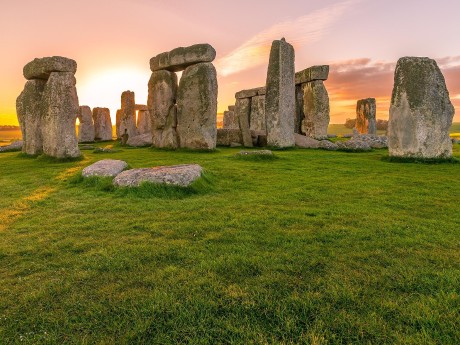
An ancient marvel in England’s countryside, Stonehenge stands as a timeless enigma. Composed of massive towering stones arranged in a circular pattern, surrounded by a vast landscape, its purpose and origin continue to puzzle many. Named one of UNESCO World Heritage sites, these towering stones are visited by many each year.
A modern and vibrant city, Liverpool has a unique charm and culture which shows in the Scousers immense pride of their city. Liverpool was once one of the most important cities of the British Empire, and after suffering numerous economic and social problems has now been redeveloped into a thriving cultural hub. As the birthplace of The Beatles it’s easy to see why Liverpool is home to an excellent music scene, as well as a plethora of cultural offerings from markets to art galleries throughout its regenerated urban centre.
Additional Information
Liverpool is a city with great cultural heritage and was awarded the title of European Capital of Culture 2008, with the famous Pier Head Waterfront being a UNESCO World Heritage site since 2004. Liverpool is home to the Royal Liverpool Philharmonic Orchestra and is also renowned for nurturing the talents of a wide range of musicians and band such as The Beatles, Gerry and the Pacemakers, Frankie Goes to Hollywood, Echo and the Bunnymen, and Elvis Costello. The city possesses the largest national museum collection outside of London and has a fascinating and turbulent history as a great world maritime centre. Liverpool is home to Europe's oldest Chinatown. The famous Grand National Horse Race takes place in the outskirts of the city (Aintree). It is also home to two very successful Premier League football clubs, Liverpool and Everton. People from Liverpool are called Liverpudlians, or more popularly, Scousers. The latter name comes from the local lamb stew recipe, scouse.
© Sourced from Wikivoyage
Liverpool
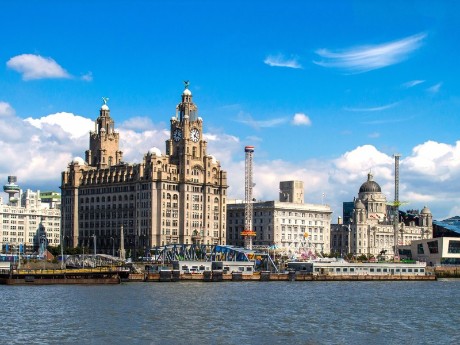
A modern and vibrant city, Liverpool has a unique charm and culture which shows in the Scousers immense pride of their city. Liverpool was once one of the most important cities of the British Empire, and after suffering numerous economic and social problems has now been redeveloped into a thriving cultural hub. As the birthplace of The Beatles it’s easy to see why Liverpool is home to an excellent music scene, as well as a plethora of cultural offerings from markets to art galleries throughout its regenerated urban centre.
Read more
A postcard-pretty region filled with craggy mountains, glimmering lakes, quaint villages and vast farmland, the Lake District is without a doubt the most popular national park in the UK. Recently named as a UNESCO World Heritage Site, the area featured as inspiration for many classic writers and poets due to its magical beauty and unique landscape. Nowadays, visitors can stay in one of the charming towns dotted throughout the park and explore the surroundings by foot, bike or car to enjoy the calm atmosphere and incredible views.
Lake District National Park

A postcard-pretty region filled with craggy mountains, glimmering lakes, quaint villages and vast farmland, the Lake District is without a doubt the most popular national park in the UK. Recently named as a UNESCO World Heritage Site, the area featured as inspiration for many classic writers and poets due to its magical beauty and unique landscape. Nowadays, visitors can stay in one of the charming towns dotted throughout the park and explore the surroundings by foot, bike or car to enjoy the calm atmosphere and incredible views.
Read more
A truly global capital city, London is widely recognised for its worldwide influence on music, fashion and culture, as well as politics, trade and finance. As the largest city in Western Europe, London is cosmopolitan and vibrant and is characterised by its diverse and multicultural population. Those looking for history and culture can visit one of its many free museums or classic landmarks which line the cityscape, and for foodies the options are endless, ranging from international street food and markets to fine dining. London has it all.
Additional Information
History
Settlements have existed on the site of London since well before Roman times, with evidence of Bronze Age and Celtic inhabitants. The Roman city of Londinium, established just after the Roman conquest of Britannia in the year 43, formed the basis for the modern city (some isolated Roman period remains are still to be seen within the City). After the end of Roman rule in 410 and a short-lived decline, London experienced a gradual revival under the Anglo-Saxons, as well as the Norsemen, and emerged as a great medieval trading city, eventually replacing Winchester as the royal capital of England. This paramount status for London was confirmed when William the Conqueror, a Norman, built the Tower of London after the conquest in 1066 and was crowned King of England in Westminster.
London went from strength to strength with the rise of England to first European then global prominence, and the city became a great centre of culture, government and industry. London's long association with the theatre, for example, can be traced back to the English renaissance (witness the Rose Theatre and great playwrights like Shakespeare who made London their home). With the rise of Britain to supreme maritime power in the 18th and 19th centuries (see Industrial Britain) and the possessor of the largest global empire, London became an imperial capital and drew people and influences from around the world to become, for many years, the largest city in the world.
England's royal family has, over the centuries, added much to the London scene for today's traveller: the Albert Memorial, Buckingham Palace, Kensington Palace, Royal Albert Hall, Tower of London, Kew Palace and Westminster Abbey being prominent examples.
Despite the decline of the British Empire, and suffering during World War II when London was heavily bombed by the German Luftwaffe in the Blitz, the city remains a top-tier world city: a global centre of culture, finance, and learning. Today London is easily the largest city in the United Kingdom, eight times larger than the second largest, Birmingham, and ten times larger than the third, Glasgow, and dominates the economic, political and social life of the nation. It's full of excellent bars, galleries, museums, parks and theatres. It is also the most culturally and ethnically diverse part of the country, and arguably of the whole of Europe as well, making it a great multicultural city to visit. Samuel Johnson famously said, "when a man is tired of London, he is tired of life". Whether you are interested in ancient history, modern art, opera or underground raves, London has it all.
The City and Westminster
If you ask a Londoner where the centre of London is, you are likely to get a wry smile. This is because historically London was two cities: a commercial city and a separate government capital.
The commercial capital was the City of London. This had a dense population and all the other pre-requisites of a medieval city: walls, a castle (The Tower of London), a cathedral (St Paul's), a semi-independent City government, a port and a bridge across which all trade was routed so Londoners could make money (London Bridge).
About an hour upstream (on foot or by boat) around a bend in the river was the government capital (Westminster). This had a church for crowning the monarch (Westminster Abbey) and palaces. As each palace was replaced by a larger one, the previous one was used for government, first the Palace of Westminster (better known as the Houses of Parliament), then Whitehall, then Buckingham Palace. The two were linked by a road called The "Strand", the old English word for "riverbank".
London grew both west and east. The land to the west of the City (part of the parish of Westminster) was prime farming land (Covent Garden and Soho for example) and made good building land. The land to the east was flat, marshy and cheap, good for cheap housing and industry, and later for docks. Also the wind blows 3 days out of 4 from west to east, and the Thames (into which the sewage went) flows from west to east. So the West End was up-wind and up-market, the East End was where people worked for a living.
Modern-day London in these terms is a two-centre city, with the area in between known confusingly as the West End.
Climate
Despite having perhaps a fair reputation for being unsettled, London enjoys a mild climate on average. As much as one in three days on average will bring rain, though sometimes for only a short period. In some years, 2012 and 2018 being examples, there was no rain for a number of weeks. The fact that Londoners would find this remarkable should be an indication to visitors from drier climates of what they may be in for!
Extreme weather is rare. Occasionally there may be heavy rain that can bring localised flooding or strong winds that may down trees and damage roofs, but overall you are unlikely to encounter anything too lively.
Winter
Winter in London is mild compared to nearby continental European cities due to both the presence of the Gulf Stream and the urban heat effect. The average daily maximum temperature is 8°C (46°F) in December and January. The coldest temperature recorded in London stands at −16.1 °C (3.0 °F) and was recorded at Northolt during January 1962, but this occurred during one of the coldest winters ever seen in the UK.
Daylight hours become increasingly shorter with darkness falling at 15:00 in December. Days continue to be short up until March when sunset starts to occur after 19:00.
Snow does occur, usually a few times a year but rarely heavily (a few years being exceptions such as the winters of 2009 and 2010, with temperatures dipping down to sub-zeros regularly). Snow in London can be crippling, as seen at the end of 2010. Just 7 cm (3 in) of snow will cause trains to stop running, airports to see significant delays, and the postal service to come to a halt. London is a city which does not cope well with snow; walkways, stairs, and streets will not be cleared by shovels or ploughs. The streets will be salted/gritted, but will remain slick and snow/slush covered until the sun melts it away. This is due to a lack of widespread snow-clearing infrastructure as the city does not often see snow.
Spring
Spring in the capital can be something of a weather rollercoaster with big variations in temperature day by day. It can be a very wet time of year, but the increases in day length from March onwards and steady temperature increases as the season progresses can make it a pleasant time to visit.
Days can be mild and warm, but the temperature will often dip at night as the sun's warmth dissipates.
The beginning of spring in March can be as cold as winter, so be sure to bring something warm to wear!
Summer
Summer is perhaps the best season for tourists as it has long daylight hours as well as mild temperatures. The average daily high temperatures in July and August are around 24°C (75°F). The highest temperature ever seen in London stands at 38.1°C (100.6°F), which was recorded on 10 August 2003 at Kew Gardens.
Humidity across the city can increase and stay high over the course of several days and nights, leading to unexpectedly muggy conditions. Also, upon occasion, clouds of dust from storms in the Sahara desert can be blown across Europe and lead to increases in pollution levels.
Despite the increased warmth, the weather in summer can be variable. Occasional prolonged instances of rain and unexpected dips in temperature can occur. If you're coming during the summer it is still advised to dress in layers and bring some waterproofs!
Autumn
Autumn in London can vary from year to year: In some years September and October can see temperatures not far below those seen in summer due to a phenomenon known as an "Indian summer", but in other years the temperature can decrease rapidly to winter levels and stay there. Autumn tends to be the wettest and windiest season but, again, this can vary from year to year. Day length at the beginning of autumn is near that of summer, meaning that a September trip can still be as easy to plan as an August one as there's plenty of daylight to work with.
Mid-autumn is a wonderful time to wander one of London's many tree-filled parks as the leaves fade from green to gold. Another benefit of a September trip is that children return to school at the beginning of the month, meaning that some tourist attractions will be quieter.
It's best to see autumn in London as being like a box of chocolates: You never know what you're going to get!
Tourist information centres
London has no centrally located tourist information centre. The City of London Information Centre, as the last remaining information centre in any of the Central London boroughs, is now the only impartial, face-to-face source of tourist information in Central London. It is located in St. Paul's Churchyard, next to St. Paul's Cathedral, and is open every day other than Christmas Day and Boxing Day, M-Sa 09:30-17:30 and Su 10:00-16:00. There is no office for tourist information for the UK or for England.
© Sourced from Wikivoyage
London
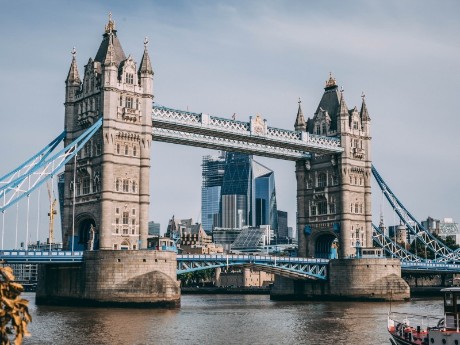
A truly global capital city, London is widely recognised for its worldwide influence on music, fashion and culture, as well as politics, trade and finance. As the largest city in Western Europe, London is cosmopolitan and vibrant and is characterised by its diverse and multicultural population. Those looking for history and culture can visit one of its many free museums or classic landmarks which line the cityscape, and for foodies the options are endless, ranging from international street food and markets to fine dining. London has it all.




